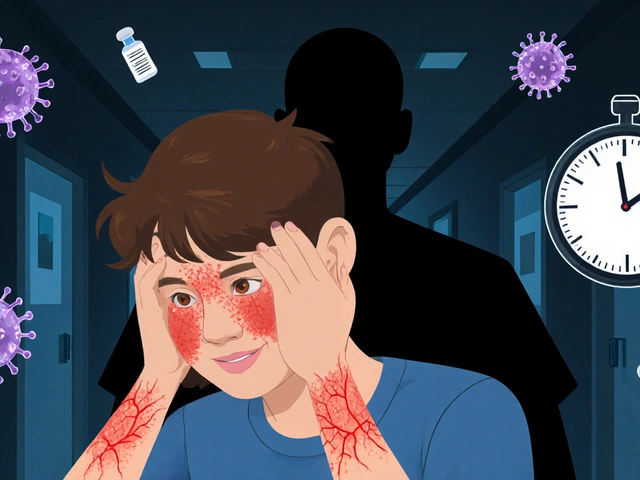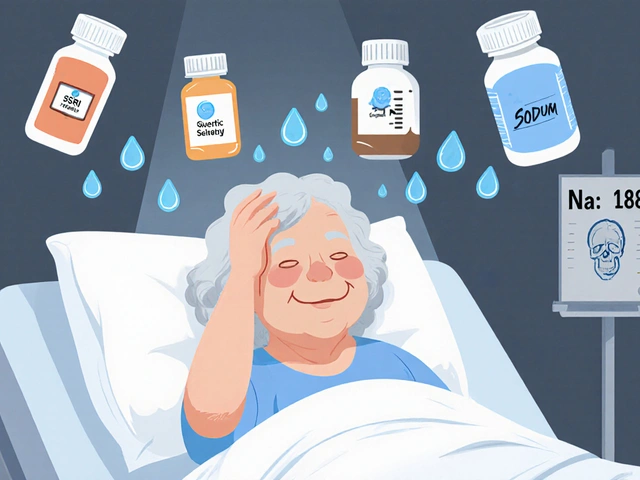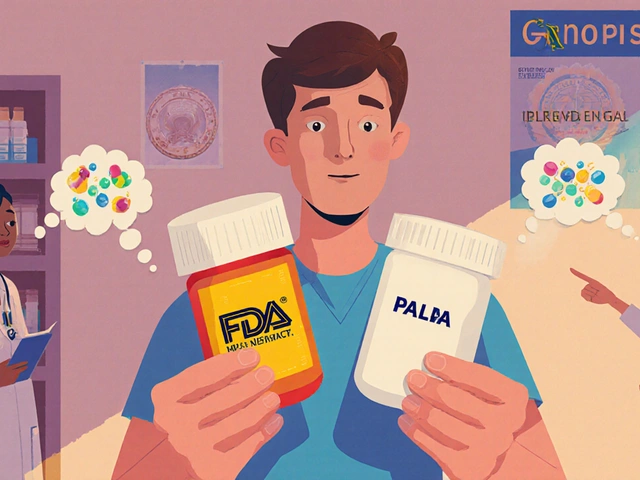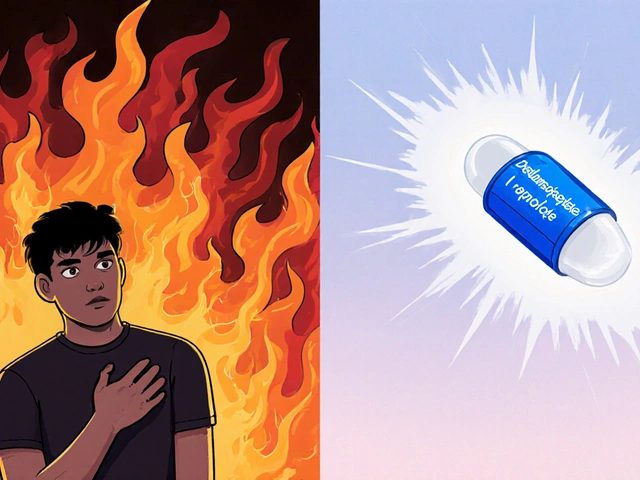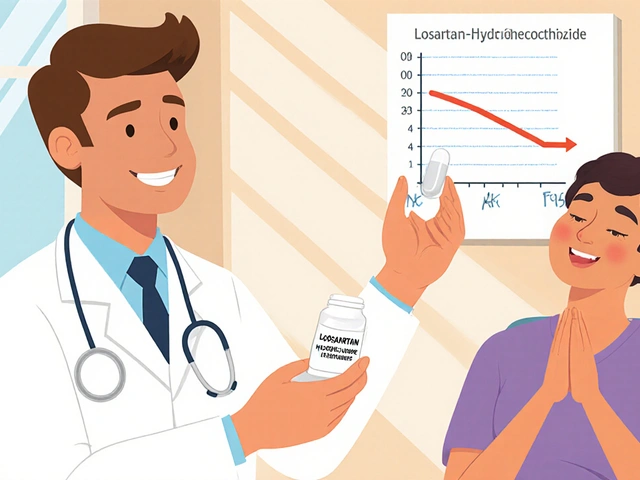Scopolamine is the most effective single medication for preventing motion sickness - but it doesn’t come without risks. If you’ve ever felt dizzy, drowsy, or disoriented after using a scopolamine patch on a cruise or during a long flight, you’re not alone. What many don’t realize is that the drowsiness isn’t just a side effect - it’s a warning sign of potentially dangerous interactions with other common substances. Mixing scopolamine with alcohol, sleep aids, painkillers, or even CBD can turn a helpful travel aid into a serious health hazard.
How Scopolamine Works - and Why It Makes You Sleepy
Scopolamine, also known as hyoscine, blocks acetylcholine - a key brain chemical involved in balance, nausea control, and alertness. By doing this, it stops the signals that make you feel seasick, airsick, or carsick. But because it crosses the blood-brain barrier easily, it doesn’t just calm your stomach - it slows down your entire nervous system.
The transdermal patch (Transderm Scōp) is the most common form. It delivers about 0.5 mg of scopolamine per day over three days, starting to work after four hours and lasting up to 72 hours. That’s why it’s popular among cruise passengers, military pilots, and commercial fishermen. But this long-lasting effect is also its biggest downside. Once the patch is on, you can’t just take it off if you feel too sleepy - you have to wait for it to wear off naturally, which can take up to 24 hours.
Studies show scopolamine reduces motion sickness symptoms in nearly 80% of users - better than Dramamine or Bonine. But 45% of users report significant drowsiness. That’s not mild tiredness. It’s the kind of sleepiness that makes driving dangerous, turns conversations into struggles, and leaves you feeling like you’re moving through fog.
The Real Danger: Combining Scopolamine With Other Sedatives
Scopolamine doesn’t just make you sleepy on its own. It multiplies the effects of other depressants. The American Society of Anesthesiologists warns that combining scopolamine with benzodiazepines (like Xanax or Valium), opioids (like oxycodone or codeine), or even over-the-counter sleep aids can increase the risk of respiratory depression by more than three times.
Here’s what that looks like in real life:
- A 68-year-old woman takes her nightly melatonin and a scopolamine patch before a cruise. She wakes up confused, breathing shallowly, and is rushed to the ER.
- A Navy pilot uses scopolamine for a 10-hour training flight and drinks one beer to relax afterward. He becomes severely disoriented and nearly misses his landing.
- A traveler on a long-haul flight takes a scopolamine patch and a CBD gummy for anxiety. Within hours, they’re too groggy to stand, with blurred vision and slurred speech.
These aren’t rare cases. A 2024 review of patient reports found that 41% of negative experiences with scopolamine involved alcohol or sedatives. In one study of cruise passengers, 32% removed their patch early - not because the nausea returned, but because they couldn’t function.
What You Should Never Mix With Scopolamine
Here’s a clear list of substances that can dangerously interact with scopolamine:
- Alcohol - Even one drink can double sedation. The European Medicines Agency now requires explicit warnings on all scopolamine packaging about alcohol use.
- Benzodiazepines - Xanax, Klonopin, Ativan - all increase the risk of confusion, falls, and breathing problems, especially in older adults.
- Opioids - Painkillers like hydrocodone or tramadol can cause life-threatening respiratory depression when combined with scopolamine.
- Antihistamines - Dramamine, Benadryl, and similar OTC meds contain diphenhydramine or doxylamine, which add to the anticholinergic load and raise the risk of delirium.
- CBD products - New research shows CBD can inhibit liver enzymes that break down scopolamine, increasing its concentration in the blood by 22-35%.
- Sleep aids - Zolpidem (Ambien), zaleplon, or even herbal sleep formulas like valerian root can turn a manageable nap into unconsciousness.
The FDA’s 2024 update to scopolamine labeling now includes a black box warning for elderly patients - those over 65 are 40% more likely to develop delirium when scopolamine is mixed with any CNS depressant.
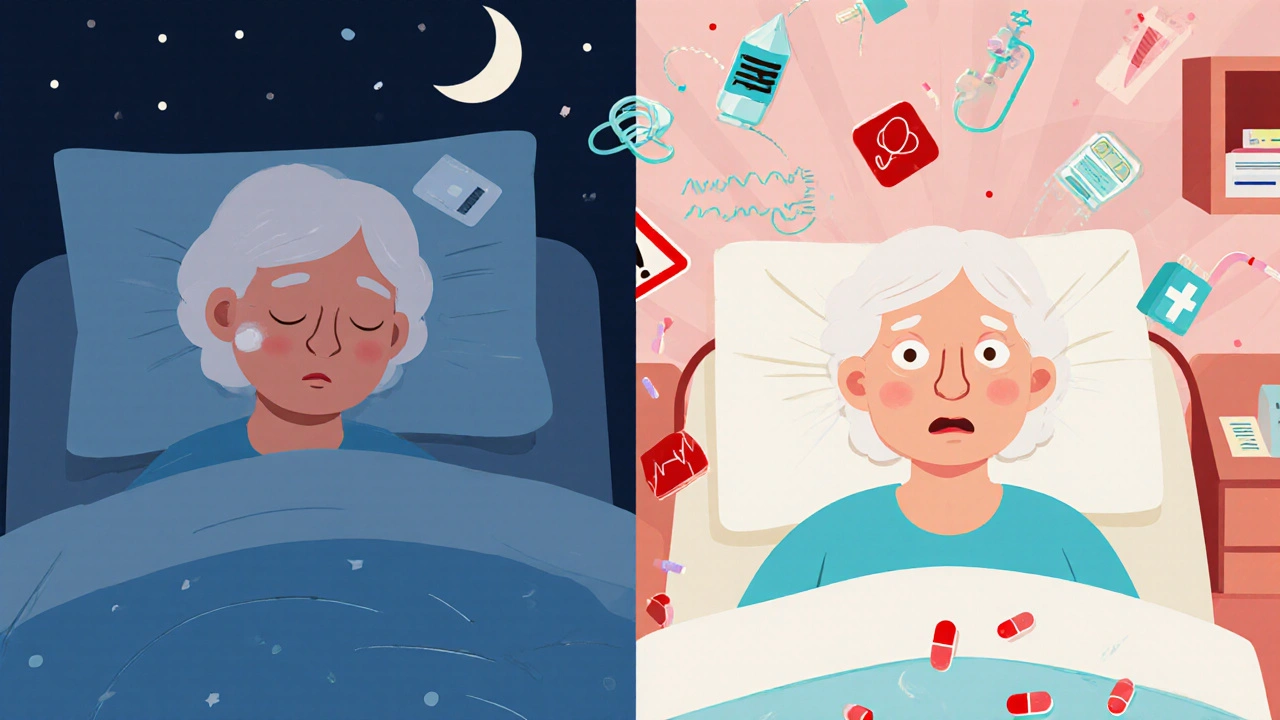
Who Should Avoid Scopolamine Altogether
Scopolamine isn’t safe for everyone. It’s contraindicated in people with:
- Glaucoma (it can raise eye pressure)
- Myasthenia gravis (it worsens muscle weakness)
- Severe liver or kidney disease (it builds up in the body)
- Prostate problems or bowel obstruction (it slows digestion)
- History of psychosis or dementia (it can trigger hallucinations or confusion)
Even if you don’t have these conditions, you should be cautious if you’re over 60, take multiple medications, or have a low tolerance for drowsiness. The American Academy of Neurology recommends applying the patch the night before travel - not the morning of - so you can experience the sedation while safely asleep.
What to Do If You’re Too Sedated
If you feel dangerously drowsy, confused, or have trouble breathing after applying the patch:
- Remove the patch immediately.
- Stay in a safe place - don’t drive, operate machinery, or climb stairs.
- Drink water and stay awake if possible.
- Call a doctor or poison control if symptoms worsen or last more than 24 hours.
Most side effects fade within 12 to 24 hours after patch removal. But if you’ve mixed it with alcohol or opioids, symptoms may linger longer. Never wait to see if it “wears off on its own” - if you’re struggling to breathe or can’t stay awake, seek help immediately.

Alternatives and New Options on the Horizon
If scopolamine’s sedation is too much, there are other options:
- Dimenhydrinate (Dramamine) - Works well for short trips but needs dosing every 4-6 hours. Less risk of prolonged sedation.
- Meclizine (Bonine) - Milder drowsiness, often preferred for day trips or business travel.
- Ginger supplements - Shown in multiple studies to reduce nausea with no sedation. Best taken 30-60 minutes before travel.
- Acupressure wristbands - No drugs, no side effects. Works for mild cases.
New developments are coming. In April 2024, the FDA approved a lower-dose scopolamine patch (0.5 mg over 3 days) designed to reduce sedation while keeping anti-nausea effects. And researchers are testing a patch that slowly releases caffeine alongside scopolamine - a potential game-changer for people who need to stay alert.
For now, though, scopolamine remains the gold standard for long-duration motion sickness prevention. But its power comes with responsibility. If you use it, treat it like a controlled substance - not a casual travel hack.
Practical Tips for Safe Use
Here’s what works for people who’ve used scopolamine successfully:
- Apply the patch behind the ear at least 4 hours before travel - never right before boarding.
- Use it only once per 3-day period. Never wear two patches.
- Test it at home first. Apply the patch on a weekend, not before a big trip.
- Never drink alcohol while wearing the patch - even one beer can be too much.
- Keep a list of all your medications and review them with your doctor before using scopolamine.
- If you’re flying, inform your pilot or crew if you’re using a patch - some airlines have policies about crew members using sedating meds.
Many users swear by scopolamine - especially for long ocean voyages or multi-day flights. But the ones who have bad experiences? They didn’t read the label. Or they thought, “I’ve had one drink before - it’ll be fine.”
It won’t be fine.
Can I use scopolamine with alcohol?
No. Combining scopolamine with alcohol significantly increases drowsiness, confusion, and the risk of respiratory depression. Even one drink can cause severe impairment. The European Medicines Agency and FDA both require clear warnings against alcohol use with scopolamine patches.
How long does scopolamine stay in your system?
The patch delivers scopolamine over 72 hours, but the drug’s half-life is about 4-6 hours. Most of it is cleared from your bloodstream within 24 hours after removing the patch. However, sedative effects can linger for up to 48 hours, especially in older adults or those with liver issues.
Is scopolamine safe for older adults?
It’s risky. People over 65 are 40% more likely to develop delirium when using scopolamine, especially if they’re also taking other sedatives. The American Society of Anesthesiologists advises extreme caution or avoidance in this group. Always consult a doctor before use.
Can I cut the scopolamine patch in half to reduce side effects?
Some people do this to reduce drowsiness, but it’s not recommended by manufacturers. Cutting the patch can cause uneven drug delivery and increase the risk of overdose or underdose. If you need a lower dose, ask your doctor about the new FDA-approved 0.5 mg patch.
Does CBD interact with scopolamine?
Yes. Early research shows CBD inhibits liver enzymes that break down scopolamine, which can raise scopolamine levels in the blood by 22-35%. This increases sedation and risk of side effects. Avoid CBD products while using scopolamine unless approved by a doctor.
What’s the best time to apply the scopolamine patch?
Apply it at least 4 hours before travel - ideally the night before. This lets you experience the drowsiness while sleeping, reducing the risk of impaired function during your trip. Never apply it right before boarding a plane or boat.

